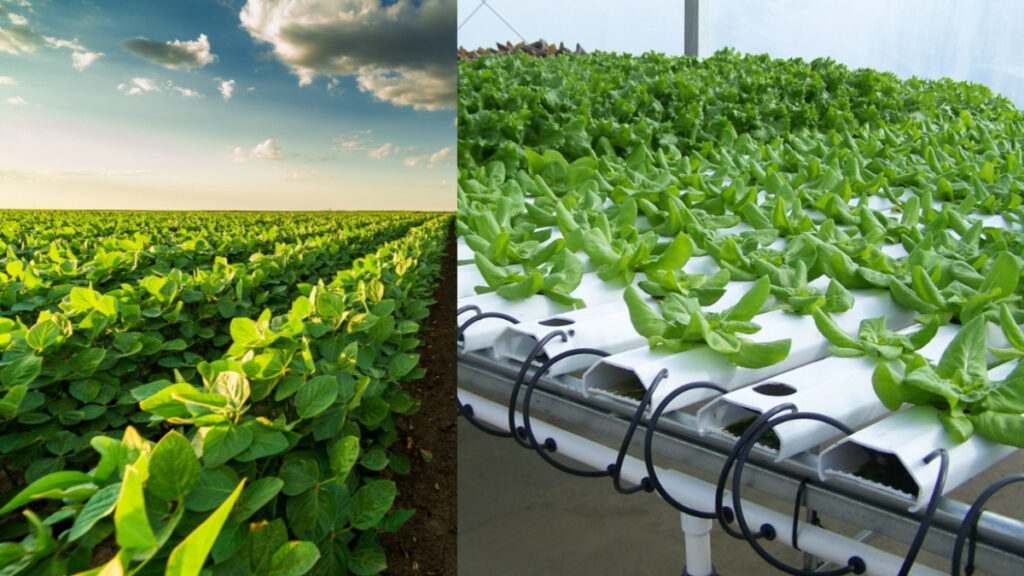Urban farming is no longer just a trend—it’s a necessity for city dwellers seeking fresh, affordable, and organic food. But with limited space, how can you get the most out of every square foot? Welcome to the ultimate guide to small space urban farming secrets that help you maximize yields and create a thriving indoor or balcony garden right in the heart of the city.
Introduction: The Rise of Urban Farming in Small Spaces
Urban farming has become increasingly popular in the USA, especially in densely populated cities like New York, Los Angeles, and Chicago. Whether it’s on rooftops, balconies, or small backyards, more Americans are embracing the art of growing their own food.
With rising grocery prices, increasing demand for organic produce, and a push for sustainability, small-space urban farming offers a practical and rewarding solution. But it’s not just about planting a few seeds—it’s about maximizing yield with smart hacks and strategies. maximize yields

Why Small Space Urban Farming Matters
- Fresh produce year-round
- Reduces grocery bills
- Promotes sustainability
- Easy to manage in urban lifestyles
- Boosts mental health through gardening therapy
Secret 1: Start with Vertical Gardening
Keyword: Vertical Gardening in Small Spaces
When you’re short on square footage, go vertical. Install wall-mounted planters, vertical shelves, or hanging baskets to stack your crops upward.
Best crops for vertical gardening:
- Leafy greens (lettuce, kale, spinach)
- Herbs (basil, mint, parsley)
- Strawberries
- Cherry tomatoes
- Pole beans
Pro Tip: Use recycled materials like wooden pallets for DIY vertical gardens to save space and money.
Secret 2: Choose High-Yield Crops
Keyword: Best Crops for Urban Farming
Selecting crops that produce a high yield in a small footprint is key. Focus on vegetables and herbs that continuously grow or offer multiple harvests.
Top high-yield crops for small gardens:
- Lettuce
- Peppers
- Tomatoes
- Cucumbers (bush variety)
- Radishes
- Microgreens
These crops not only grow fast but also regrow quickly, providing multiple harvests.
Secret 3: Companion Planting Techniques
Keyword: Companion Planting in Urban Gardens
Companion planting boosts crop productivity, reduces pests, and improves soil health—all within the same space.
Classic companion combos:
- Tomatoes + Basil (flavor enhancer + pest control)
- Carrots + Onions (repel pests)
- Lettuce + Radish (radish breaks up soil for lettuce roots)
By pairing compatible plants, you’ll get better growth and yields from the same area.
Secret 4: Use Grow Bags and Containers
Keyword: Container Gardening USA
If you don’t have access to soil or a yard, don’t worry. Grow bags and containers are a game-changer for urban farming.
Benefits:
- Lightweight and portable
- Great for balconies and patios
- Excellent drainage and root health
Best container crops: Tomatoes, potatoes, onions, kale, and herbs.
Use 5-gallon buckets, fabric grow bags, or recycled tubs to build your garden.
Secret 5: Master the Art of Succession Planting
Keyword: Succession Planting Techniques
Succession planting means planting new seeds as soon as one crop is harvested. This keeps your space producing food nonstop.
Example:
- Plant lettuce > harvest in 30 days > replant lettuce or switch to spinach.
By rotating crops quickly, you get more food per square foot throughout the year.
Secret 6: Install a Hydroponic System
Keyword: Hydroponic Farming at Home
Hydroponics allows you to grow crops without soil, using nutrient-rich water. These systems are ideal for tight indoor spaces.
Benefits of hydroponics:
- Faster growth
- Higher yield
- Clean and soil-free
- Efficient water usage
Popular hydroponic crops: Lettuce, kale, basil, and strawberries.
Small kits like Kratky or NFT systems are easy to set up in an apartment.
Secret 7: Optimize Sunlight and Grow Lights
Keyword: Indoor Grow Lights for Vegetables
Urban homes often lack direct sunlight. If your space doesn’t get 6–8 hours of sun daily, invest in LED grow lights.
Tips:
- Use full-spectrum LEDs for indoor gardens.
- Keep lights on for 12–16 hours a day.
- Rotate plants to ensure even exposure.
Grow lights help maintain healthy growth cycles and maximize harvests indoors.
Secret 8: Use Compost and Organic Fertilizer
Keyword: Organic Fertilizer for Small Gardens
Healthy soil = abundant yields. Even in containers, enriching your growing medium makes a huge difference.
Easy composting hacks:
- Use kitchen scraps to make compost.
- Mix worm castings or banana peels into the soil.
- Use compost tea for fast nutrient delivery.
Organic fertilizers boost plant health and reduce dependence on chemicals.
Secret 9: Track Growth with Garden Apps
Keyword: Urban Gardening Apps USA
There are apps that help you plan, track, and optimize your garden yields.
Top-rated apps:
- From Seed to Spoon
- Gardenate
- Planta
- GrowVeg
Use them to track planting dates, watering schedules, harvests, and even get pest alerts.
Secret 10: Join Urban Gardening Communities
Keyword: Urban Gardening Forums and Groups
Urban farming thrives in communities. Join online forums, local meetups, and gardening clubs to exchange tips and seeds.
Where to find them:
- Facebook groups (e.g., Urban Gardeners USA)
- Reddit: r/UrbanFarming
- Local community centers and co-ops
You’ll learn hacks, troubleshoot issues, and even trade your harvests!
Bonus Tips to Maximize Your Urban Yields
- Use reflective materials to bounce light back to plants indoors.
- Install rainwater catchers for sustainable watering.
- Practice pruning to keep plants compact and productive.
- Label your plants to track their needs and growth patterns.
- Use shelving units to create tiered gardens on balconies.
Conclusion: Grow More in Less Space
Urban farming doesn’t require acres of land—just the right techniques and a smart layout. From vertical gardening and hydroponics to container setups and companion planting, there are endless ways to maximize yields in small spaces.
You don’t need to be a pro. Start with one hack, observe the results, and scale up from there. In just a few months, you’ll be harvesting fresh veggies, herbs, and fruits—right from your city home.
